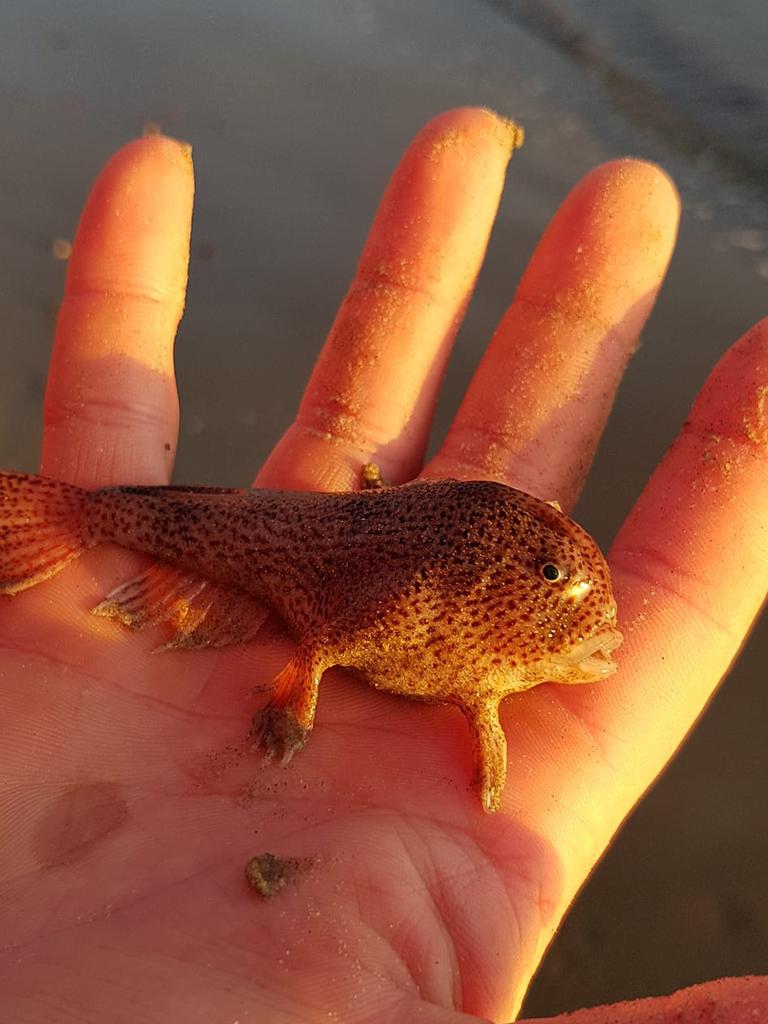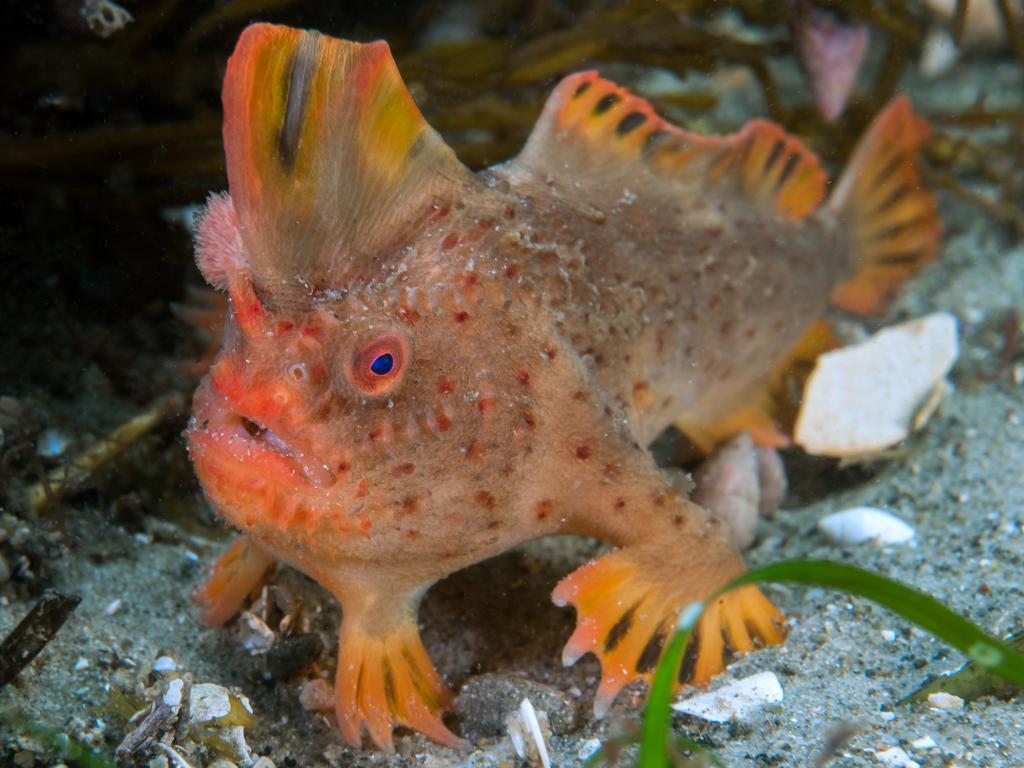‘It’s all a bit hard for them really’: critically endangered handfish saved at Nutgrove Beach
A trio of spotted handfish came ashore briefly in Sandy Bay today, with scientists explaining why the oddball creatures surfaced.
PASSERS-BY acted quickly to avert a disaster by helping three handfish back into the sea after they washed ashore in Sandy Bay on Friday morning.
The critically endangered and highly unusual fish, which are only found in the Derwent River, were spotted by walkers at Nutgrove Beach just before 8am and swiftly returned to the water.
A female rescuer, who did not wish to be named, said the handfish may have been washed in several times, after she spoke to a couple who had returned two to the water earlier in the day.
“I came back down the beach and found one after I spoke to them, so I threw it a bit so it was further out and could hopefully stay out there,” she said.
“It was a complete first – they’re amazing little creatures, we are very lucky to have them.”

The woman said wild conditions earlier in the week had caused “huge erosion” at Nutgrove Beach and may have swept the fish away from their sea floor habitat.
“The seagrass that I think they like to cling to was really torn up – there were genuine waves on the Derwent, it was like being on the beachfront,” she said.
University of Tasmania associate professor and marine expert Neville Barrett agreed that the storm surge had displaced the fish, but said they were resilient and could “definitely survive” being beached for some hours.
“It’s fortuitous that it’s winter and there was no heat … their main issue would be they can literally dry out in the sun, but if it’s cool enough and they stay moist they can be okay,” Prof Barrett said.

Prof Barrett said while deserving of critically endangered status, the spotted handfish had adapted well to altered conditions in the Derwent and the small population was “reasonably healthy”.
“They lay their eggs and then guard them down the bottom in around six to 10 metre deep water,” he said.
“A big swell has come out of the blue – you had waves absolutely crashing into the rock wall at Sandy Bay, and even at that depth they could’ve been caught out and washed ashore.
“They were probably exhausted after being smashed around. Over a week of those conditions would’ve drained their energy, they aren’t strong swimmers – it’s pretty hard work for them.”
Pushed further south over time due to warming sea temperatures, Prof Barrett said the handfish’s biggest threat was now the introduced Northern Pacific seastar, which eats the sea tulips they like to lay their eggs in.

“We’ve already changed their habitat with the zinc works and what has happened to the Derwent historically, but they still seemed to be coping,” he said.
“The eggs stick to those tulips that the sea stars eat, so it’s an increasing threat.”
The handfish breed in a very unusual way for an egg-laying marine species.
“These guys lay eggs which basically hatch as a mini-me,” Prof Barrett said.
“Little tiny handfish pop out that look exactly the same as their parents ... they pop out down the bottom and just started walking around on their hands straight away.”
The professor said marine scientists continued to be surprised by the resilience of the species, despite them not being the strongest of swimmers.
“The more we find out about them, the less their situation seems to be critical,” he said.
“But we really need to keep improving the quality of the water in the Derwent River - this is the only place they are known to be on the planet.”
Originally published as ‘It’s all a bit hard for them really’: critically endangered handfish saved at Nutgrove Beach





